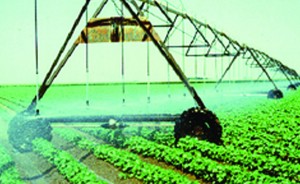Water and agriculture

In 1945, with the ratification of the UN Charter by the majority of its signatories, including the five permanent members of the Security Council, the United Nations officially came into being. However, since 1948, October 24 has been celebrated as United Nations (UN) Day.
The purpose of the United Nations is to bring all nations of the world together to work for peace and development, based on the principles of justice, human dignity and the well-being of all people. It affords the opportunity for countries to balance global interdependence and national interests when addressing international problems. This has been achieved by setting up various organisations such as UN-Water, UNESCO, UNICEF, and UNAIDS.
The FAO
Commonly known as the Food and Agriculture Organisation (FAO), this arm of the UN came into existence in 1945 to improve nutrition, increase agricultural productivity, raise the standard of living in rural populations, and contribute to global economic growth.
The goals of the FAO are as follows:
• Help eliminate hunger, food insecurity, and malnutrition;
• Make agriculture, forestry, and fisheries more productive and sustainable;
• Reduce rural poverty;
• Enable inclusive and efficient agricultural and food systems; and
• Increase the resilience of livelihoods from disasters.
According to the UN, the vast majority of population growth takes place in developing countries. FAO projects that world food production needs to increase by approximately 60 percent to feed a growing world population.
Water and agriculture
Freshwater is literally the lifeblood of agriculture.
Since the majority of the world’s freshwater is used to irrigate crops, the two are intertwined, hence, the management of the resource and the sector should be interconnected.
Agricultural water use will be a key element for increasing food production, especially in many developing countries, where water is often scarce. Currently around 800 million people in developing countries are chronically undernourished.
While there is no global water crisis, the serious water and food security problems in some developing countries and regions need to be urgently addressed. One in five developing countries will face water shortages by 2030.
According to trends, the world’s population will grow from around seven billion people today to more than eight billion by 2030, an additional two billion people need to be fed within the next 30 years. This will significantly increase the pressure on our water resources.
Additionally, agriculture is also one of the largest contributors to water pollution, whether from chemicals or poor farming practices. Did you know that?
FAO estimates that the world uses 70 percent of its fresh water for agriculture alone.
Agriculture contributes significantly to water pollution through the release of organic matter such as animal waste, and run off of excessive nutrients such as nitrogen and phosphorus.
This often results in fish kills, contamination of drinking water supply, creation of dead zones in water bodies, and poisoning of humans (cancer and blue baby syndrome).
A call is therefore made to all persons involved in agriculture, whether on a small, medium or large scale, to be mindful of how you use our precious water resources.
Employing simple measures such as; harvesting of rainwater and watering your plants in the cool of the day can go a far way. The onus is on us to strike the balance between water use and food production.



